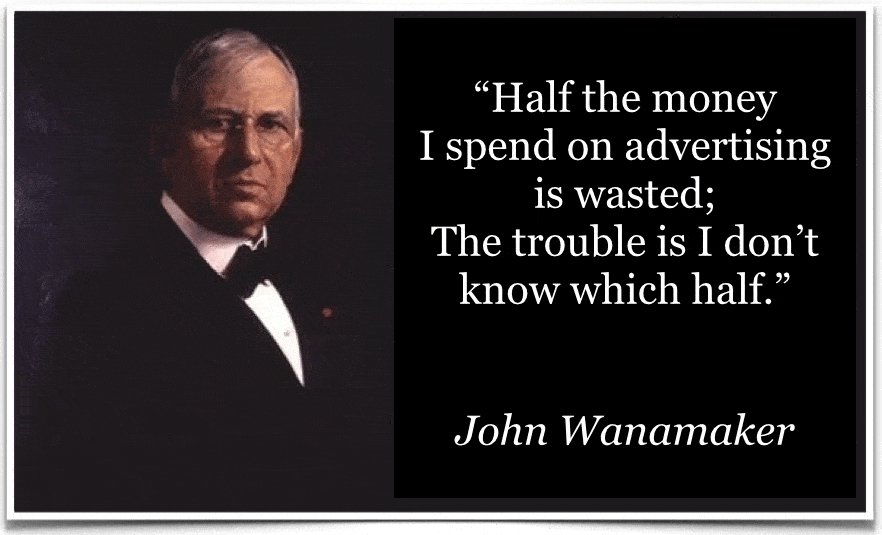
Top 100 Content Marketing Question: How do you measure a successful content marketing campaign?
Content marketing campaigns make the most sense when buyers must purchase according to a set calendar cycle, for example, when people:
- Prepare to file and pay taxes.
- Participate in seasonal sports such as hunting, fishing and skiing.
- Enroll in a college or university.
- Have only 6 weeks to enroll in Affordable Care Act (ACA) healthcare plans.
In these deadline-driven cases, content must get all the work done by a set date. Then the content can lie fallow until next year’s deadline approaches.
For products and services that people buy all year-round, an evergreen approach to content marketing makes the most sense.
Build valuable content assets
Either way, build content assets that:
- Address the topics your buyer personas are interested in.
- Answer buyers’ top questions.
- Help overcome obstacles that cause people to get stuck along the buyers’ journey.
- Are available all year round.
Whether your content marketing is deadline-driven or evergreen, the first job for new content marketing is to create a success that can be replicated. Your success will encourage other people to climb onto the content bandwagon.
Do a pilot project first

That why’s it best to start with a content marketing “pilot project.” Calling it a pilot project lowers the perceived risk and reduces others’ expectations and fears, so you gain license to operate more freely.
At Tellabs, for example, we discovered an underdeveloped market in electric utilities. No marketing had been done to electric utilities, and our sales force had next to no coverage in the market. New content addressed buyers’ information needs.
Spark a controversy
We kicked off content marketing to utilities by sparking a controversy – asking:
- Should customers use Technology A or Technology B for their communications networks?
- Which is technologically superior?
- Which is operationally more practical?
We heard many conflicting opinions on this divisive issue. Utilities had drawn battle lines, with most favoring one technology over the other.
But the bigger question of which technology was actually better hadn’t been settled authoritatively in our industry. We were in the unique position of selling both technologies A and B, while most competitors sold either one or the other.
Creating content to help buyers compare the two technologies was clearly in our interest. It educated the buyers and highlighted the limited choice others offered.
Experiment with content topics and measure the results. Over time, your audiences will show you which content they want the most.
When your pilot project meets with success, winning new customers, sales and revenue, others in your company will want to try content marketing too.
Start in a greenfield

In a company with multiple divisions or product lines, find an opportunity to start your content marketing in a greenfield. Find a greenfield market that is underserved today by sales and/or marketing.
A greenfield is an untouched market, one that hasn’t seen significant marketing investment before. It may be a new product line, a newly acquired company, a new geographic market, or an underserved customer segment.
If you can avoid it, don’t build your first content marketing program in a brownfield. When you build in a brownfield, you won’t be able to tell which results came from content marketing and which came from elsewhere.
Avoid building in a brownfield
In a brownfield you can’t cleanly calculate a return on marketing investment (ROMI) from content marketing. When content marketing is one of several marketing activities, rather than the only marketing activity, it’s much harder to prove that it’s working, due to the classic attribution problem.
In a brownfield, you face John Wanamaker’s dilemma: “Half the money I spend … is wasted; the trouble is I don’t know which half.”

When you introduce content marketing into a market that has had little to no marketing before, you can safely attribute all the results to your content marketing. That makes it easier for you to measure:
- The inputs going in (staff time and money)
- The results coming out (qualified leads, customers and revenue)
- The return on marketing investment (ROMI) of your content marketing.
It’s not always easy to know exactly which expenses went into a marketing program and exactly which revenue came out of it. A greenfield provides boundaries that enable you to demonstrate how well content marketing can work on its own.
Taking this approach heads off predictable arguments about which part of the marketing achieved which results. Here’s a guide on how to measure your success in content marketing.
When you need a greenfield to build in, look for a product line where:
- Clear boundaries separate the product line from other offerings, so revenue can be clearly attributed to content marketing.
- There’s a limited budget.
- Customers make decisions faster, so the sales cycle is shorter, and revenue becomes visible sooner.
Use analytics to do more of what’s working
Measure return on marketing investment (ROMI), revenue, sales pipeline, customers and deals won.

Present these metrics as evidence to executives. Make the results quick: boil them down to a 1-page report or 1 slide that builds. Give Sales due credit for the deals they close.
To improve content marketing results over time, you need to perform granular marketing measurements behind the scenes. Those measure include:
- Website and SEO metrics such as search rank, keywords, website traffic, time on a webpage, bounce rate, conversion path. See “Content Marketing Metrics: 10 Easy Ways to Measure Effectiveness,” a blog by Andy Crestodina.
- Email metrics such as subscribers, deliveries, open rates, click-through rates. See “Email Analytics, The 6 Email Marketing Metrics and KPIs You Should Be Tracking,” a blog by Lindsay Kolowich.
- PR metrics such as share of desirable coverage, conversions, cost-effectiveness. See “Katie Payne’s 5 Data Points You Need in Your PR Dashboard,” a blog by Steve Goldstein.
- Event metrics such as new leads, social media reach, new customers, customers reached with product demonstrations. See “The 4 Most Important Metrics for Measuring Your Trade Show Marketing ROI,” a blog by Rachel Sprung.
- Social media metrics such as followers, likes, shares, user-generated content. See “7 Social Media Metrics that Really Matter – and How to Track Them,” a blog by Eddie Shleyner.
- Brand value, as calculated under UK accounting rules. See “Brand Valuation – What It Means and Why it Matters,” a white paper from Brand Finance.
Evolve measurements from complexity to simplicity
To sum up, measure everything that’s feasible and practical to measure. You may start out by rounding up as many as 30 or 40 measures.
At first, a dashboard with 30 or 40 marketing metrics may appear as complicated as the cockpit of a commercial airliner. Give yourself time to get used to all the dials and gauges, learn which ones move in tandem, then hypothesize and experiment to improve overall results.

Assign someone to round up all the metrics from each marketing and PR function and produce a monthly report. If you have the luxury of a full-time data analyst or data scientist to help with measurement, apply their skills.
Bring the whole marketing team together to discuss marketing metrics monthly. Invite individuals to dream up their own hypotheses about why certain measures are trending up or down. Once you have a set of competing hypotheses in hand, you can test them to learn which hold up.
What executives need to know
To present results to executives, you need to measure ROMI, revenue, sales pipeline, customers and deals won. Make it simple and easy to digest. Boil down your results to a 1-page report or 1 slide that builds.
Through this process – discovering data, hypothesizing and testing – you find out which measures are most important. In particular, you’ll find out which ones best foreshadow growth in revenue, sales and customers. Then you can manage a smaller set of metrics – 5 or 10 – that are sufficient to fine-tune your content marketing.
When you seek measurement help from third-party consultants, be careful. Many experts set out to intentionally mystify measurement.
How can you tell? They talk over your head. They make measurement seem too complex for mere mortals to understand.
If consultants can’t walk you through the measurement process and make it reasonable to understand, avoid them.
Find the simplest set of measures that work for your company. The quality of any marketing measurement reflects:
- The quality of the questions you ask
- The hypotheses you test
- The willingness to accept the data, no matter what it says – even when it doesn’t reinforce your existing beliefs.
As David Ogilvy noted long ago, most clients use to research the way a drunk uses a lamppost – more for support than illumination.

The challenge of marketing measurement is to seek true illumination. Over time, as you learn, measurement can become as easy and intuitive as the dashboard of your car.
Be patient
Content marketing is a long-term play. It’s all about building relationships by teaching and helping customers. Teach or entertain them first, then sell.
Creating great content marketing is like planting a fruit tree. It may take a year or two of work to get your first fruits.
But it’s totally worth the wait, because the content marketing you plant the right way will produce results year after year.
To measure a successful content marketing campaign:
- Build valuable content assets.
- Do a pilot project first, if possible.
- Start in a greenfield.
- Use analytics to do more of what’s working.
- Be patient.
“How do you measure a successful content marketing campaign?” is one of marketers’ Top 100 Questions about content marketing.






